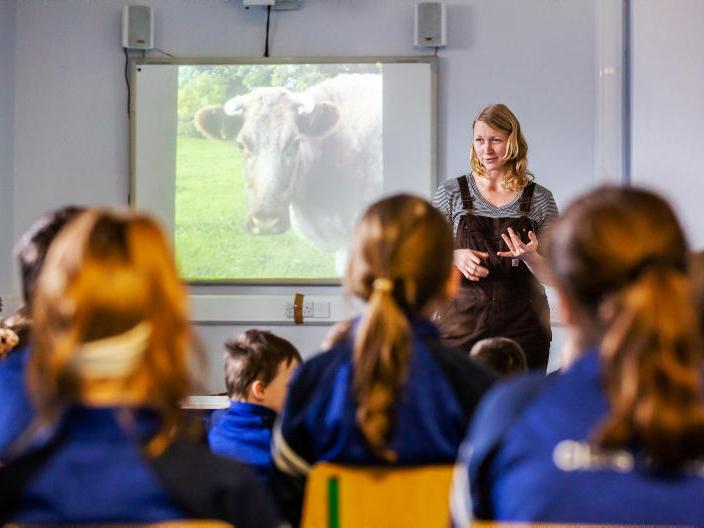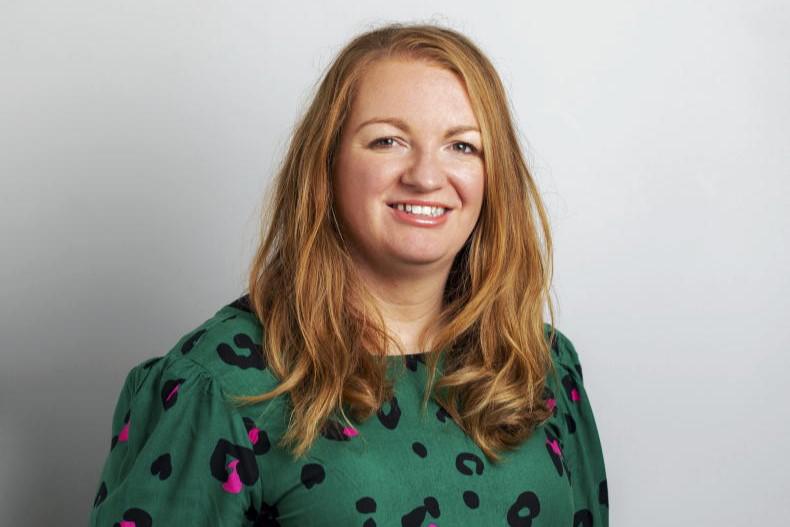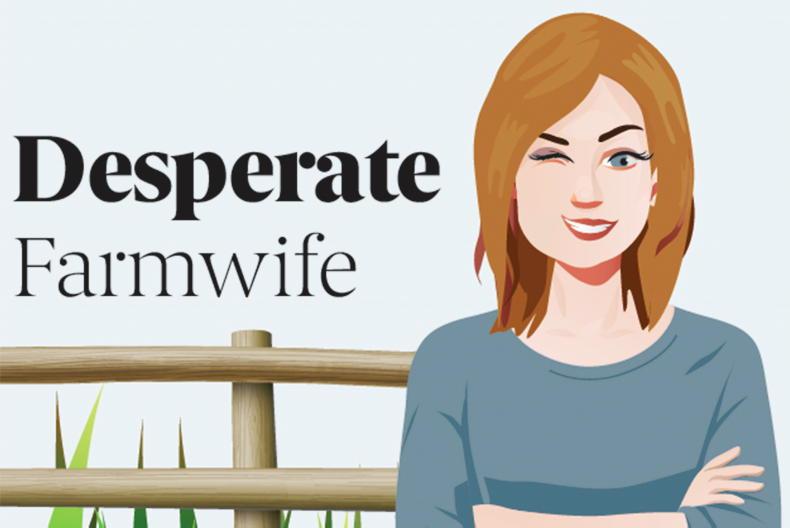In February, well before schools across Ireland were closed, Irish Country Living visited Holy Family National School in Co Tipperary to host a local food hero day. The students met and chatted with some local farmers, we made lunch, ate together and the kids told us about some of their own personal food heroes – parents, local delivery drivers and distributors.
In recent weeks, we’ve just become more aware of how important these people are to us; both on a community level and as a society.

Students from Holy Family National School with Mimi Crawford. \ Philip Doyle
A few Holy Family students wrote about their experience on the day and we thought we would share their very wise words. A big thank you to the staff and students at Holy Family National School for inviting us in and showing so much interest in farming and food; and to our farmer presenters.
Age: Nine
At our school, we love to cook and know all about food. Mimi Crawford came from Crawford’s Farm in Cloughjordan to speak to us about their organic farm. On Mimi’s farm they have 10 cows, ducks, chickens and pigs. They produce organic milk, butter and cream. They sell eggs at the local farmers market. They use natural fertilisers and don’t use sprays.
Pat Kennedy also spoke about being a dairy farmer in our village. He has a lot of cows and farms on a much larger scale than the Crawfords. On his farm they use fertilisers and sprays on the grass to make it grow. He said the farmers in Ireland are very good at looking after the environment but could do more. It was very interesting to listen to both Pat and Mimi.

Students at Holy Family National School make flatbread. \ Philip Doyle
After, we had homemade vegetable soup and got to make our own flatbread. To make the flatbread, you just need to mix flour and yoghurt together and then fry it on a hot pan for a few minutes.
While everyone was waiting to make their flatbread we wrote about our local food heroes. I wrote about my aunt and uncle, who own Templetuohy Foods, which supplies shops and restaurants with lots of meat products that they get from farmers.
After everyone made their flatbread we sat down in our school hall and ate. It was delicious.
Age: 11
On our food day, I learned that Mimi’s organic farm doesn’t pasteurise their milk, it comes straight from the bulk tank. They sell their milk to the shops for a higher price than pasteurised milk.
An organic farm doesn’t use chemicals to grow their crops; they use organic slurry. I also learned that it takes two years to be certified as an organic farm.

Local dairy farmer Pat Kennedy speaks to students at Holy Family National School. \ Philip Doyle
Then Pat Kennedy talked to us about his farm, which is commercial farm. He is a dairy farmer and he has about 70 cows and a bull called Fred. Pat milks twice a day. His milk is pasteurised before going to the supermarket. Pat was telling us he is very busy as cows are calving this time of the year. All of us children got to ask questions and I was eager to ask about my favourite part of the farm: the machinery. Pat said he loved tractors just like me. He said he had two Massey Fergusons and two Zetors. I really enjoyed the talk and found it very interesting as I love farming. I want to be a farmer when I grow up and do all the work Pat does.
Age: 11
Mimi from Crawford’s Farm came to talk to us about her organic farm. She has cows, pigs, ducks, hens, chickens and a rooster. Mimi told us that they don’t pasteurise their milk and don’t spread or spray chemicals. They use portable houses for the animals.
I learned that they don’t move the animals they just rotate into different sections. The younger children in our school asked lots of questions about the types of animals they had.

Local farmer Mimi Crawford speaks to students at Holy Family National School. \ Philip Doyle
Pat told us about his farm, which is a dairy farm. He told us how he milks his cows, how many cows he has and how many acres he has.
I loved when Mimi was telling us about her farm and I loved the bread and soup we ate for lunch. Overall, I loved the food experience day. I think it’s really important to know how our food is produced.
Age: 11
In February, Philip from the Irish Farmers Journal came with two expensive cameras to take pictures of us. First we talked to Mimi from Crawford’s Farm. We asked loads of questions and then we spoke to Pat Kennedy.
My mother Joanne also came and gave a little talk about our farm. We have 260 cows and about 150 calves now and we are still calving. Pat cuts his own silage. Crawford’s Farm do not cut silage. They grow corn, wheat and other crops. Crawford’s Farm gets the grain from the crops to feed the animals. They have 10 cows which all have calves. They have a bull, pigs, ducks, hens and chickens. Sometimes during the year Crawford’s could have up to 1000 chickens. Pat has 65 cows, one bull, a few hens and two dogs. When we were finished we made bread with Janine. We all took turns making the bread. CL
In February, well before schools across Ireland were closed, Irish Country Living visited Holy Family National School in Co Tipperary to host a local food hero day. The students met and chatted with some local farmers, we made lunch, ate together and the kids told us about some of their own personal food heroes – parents, local delivery drivers and distributors.
In recent weeks, we’ve just become more aware of how important these people are to us; both on a community level and as a society.

Students from Holy Family National School with Mimi Crawford. \ Philip Doyle
A few Holy Family students wrote about their experience on the day and we thought we would share their very wise words. A big thank you to the staff and students at Holy Family National School for inviting us in and showing so much interest in farming and food; and to our farmer presenters.
Age: Nine
At our school, we love to cook and know all about food. Mimi Crawford came from Crawford’s Farm in Cloughjordan to speak to us about their organic farm. On Mimi’s farm they have 10 cows, ducks, chickens and pigs. They produce organic milk, butter and cream. They sell eggs at the local farmers market. They use natural fertilisers and don’t use sprays.
Pat Kennedy also spoke about being a dairy farmer in our village. He has a lot of cows and farms on a much larger scale than the Crawfords. On his farm they use fertilisers and sprays on the grass to make it grow. He said the farmers in Ireland are very good at looking after the environment but could do more. It was very interesting to listen to both Pat and Mimi.

Students at Holy Family National School make flatbread. \ Philip Doyle
After, we had homemade vegetable soup and got to make our own flatbread. To make the flatbread, you just need to mix flour and yoghurt together and then fry it on a hot pan for a few minutes.
While everyone was waiting to make their flatbread we wrote about our local food heroes. I wrote about my aunt and uncle, who own Templetuohy Foods, which supplies shops and restaurants with lots of meat products that they get from farmers.
After everyone made their flatbread we sat down in our school hall and ate. It was delicious.
Age: 11
On our food day, I learned that Mimi’s organic farm doesn’t pasteurise their milk, it comes straight from the bulk tank. They sell their milk to the shops for a higher price than pasteurised milk.
An organic farm doesn’t use chemicals to grow their crops; they use organic slurry. I also learned that it takes two years to be certified as an organic farm.

Local dairy farmer Pat Kennedy speaks to students at Holy Family National School. \ Philip Doyle
Then Pat Kennedy talked to us about his farm, which is commercial farm. He is a dairy farmer and he has about 70 cows and a bull called Fred. Pat milks twice a day. His milk is pasteurised before going to the supermarket. Pat was telling us he is very busy as cows are calving this time of the year. All of us children got to ask questions and I was eager to ask about my favourite part of the farm: the machinery. Pat said he loved tractors just like me. He said he had two Massey Fergusons and two Zetors. I really enjoyed the talk and found it very interesting as I love farming. I want to be a farmer when I grow up and do all the work Pat does.
Age: 11
Mimi from Crawford’s Farm came to talk to us about her organic farm. She has cows, pigs, ducks, hens, chickens and a rooster. Mimi told us that they don’t pasteurise their milk and don’t spread or spray chemicals. They use portable houses for the animals.
I learned that they don’t move the animals they just rotate into different sections. The younger children in our school asked lots of questions about the types of animals they had.

Local farmer Mimi Crawford speaks to students at Holy Family National School. \ Philip Doyle
Pat told us about his farm, which is a dairy farm. He told us how he milks his cows, how many cows he has and how many acres he has.
I loved when Mimi was telling us about her farm and I loved the bread and soup we ate for lunch. Overall, I loved the food experience day. I think it’s really important to know how our food is produced.
Age: 11
In February, Philip from the Irish Farmers Journal came with two expensive cameras to take pictures of us. First we talked to Mimi from Crawford’s Farm. We asked loads of questions and then we spoke to Pat Kennedy.
My mother Joanne also came and gave a little talk about our farm. We have 260 cows and about 150 calves now and we are still calving. Pat cuts his own silage. Crawford’s Farm do not cut silage. They grow corn, wheat and other crops. Crawford’s Farm gets the grain from the crops to feed the animals. They have 10 cows which all have calves. They have a bull, pigs, ducks, hens and chickens. Sometimes during the year Crawford’s could have up to 1000 chickens. Pat has 65 cows, one bull, a few hens and two dogs. When we were finished we made bread with Janine. We all took turns making the bread. CL



















SHARING OPTIONS